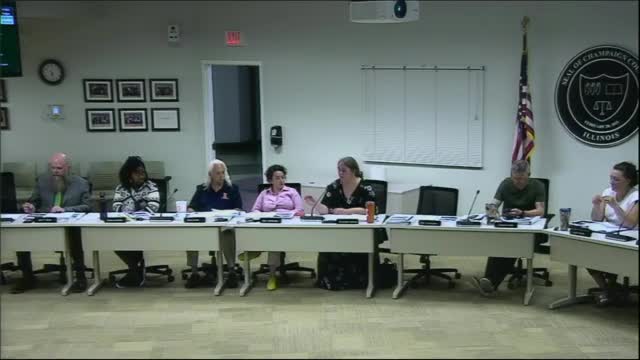Budget Decisions Loom as Public Safety Funding Faces Cuts
August 27, 2024 | Champaign County, Illinois
This article was created by AI summarizing key points discussed. AI makes mistakes, so for full details and context, please refer to the video of the full meeting. Please report any errors so we can fix them. Report an error »

During a recent government meeting, discussions centered on budget allocations for personnel within the sheriff's department, highlighting the need for additional funding to convert deputies to sergeant positions and the implications of these decisions on future budgets.
A key proposal involved converting two deputies into sergeant roles, which would require an additional $117,000 this year. The sheriff expressed uncertainty about future funding but emphasized the importance of this change for departmental structure. The board faced a decision on whether to cover this cost or require the sheriff to find savings elsewhere, potentially by not replacing two deputy positions.
The sheriff's request included a broader plan to add two sergeant positions at a recurring cost of approximately $360,000 annually, alongside an upfront cost of around $200,000 for necessary equipment and training. The board was reminded that without the passage of a public safety sales tax, the fund balance for public safety could diminish significantly over the next six years, raising concerns about long-term sustainability.
The conversation also touched on the operational challenges faced by the sheriff's department, particularly regarding response times and staffing levels. Board members noted that insufficient funding could lead to slower response times and hinder public safety efforts, emphasizing the need for a fully funded personnel budget.
In addition to personnel discussions, the meeting addressed the budget for the correctional center, which is projected to have a revenue of $1.6 million against expenditures of $7.9 million for fiscal year 2025. This reduction in expenditures is attributed to a decrease in the need for out-of-county inmate housing, although the sheriff cautioned that unexpected construction delays could necessitate additional funding requests in the future.
Overall, the meeting underscored the critical nature of budgetary decisions impacting public safety and the operational effectiveness of law enforcement agencies, with board members weighing immediate needs against long-term financial implications.
A key proposal involved converting two deputies into sergeant roles, which would require an additional $117,000 this year. The sheriff expressed uncertainty about future funding but emphasized the importance of this change for departmental structure. The board faced a decision on whether to cover this cost or require the sheriff to find savings elsewhere, potentially by not replacing two deputy positions.
The sheriff's request included a broader plan to add two sergeant positions at a recurring cost of approximately $360,000 annually, alongside an upfront cost of around $200,000 for necessary equipment and training. The board was reminded that without the passage of a public safety sales tax, the fund balance for public safety could diminish significantly over the next six years, raising concerns about long-term sustainability.
The conversation also touched on the operational challenges faced by the sheriff's department, particularly regarding response times and staffing levels. Board members noted that insufficient funding could lead to slower response times and hinder public safety efforts, emphasizing the need for a fully funded personnel budget.
In addition to personnel discussions, the meeting addressed the budget for the correctional center, which is projected to have a revenue of $1.6 million against expenditures of $7.9 million for fiscal year 2025. This reduction in expenditures is attributed to a decrease in the need for out-of-county inmate housing, although the sheriff cautioned that unexpected construction delays could necessitate additional funding requests in the future.
Overall, the meeting underscored the critical nature of budgetary decisions impacting public safety and the operational effectiveness of law enforcement agencies, with board members weighing immediate needs against long-term financial implications.
View full meeting
This article is based on a recent meeting—watch the full video and explore the complete transcript for deeper insights into the discussion.
View full meeting
